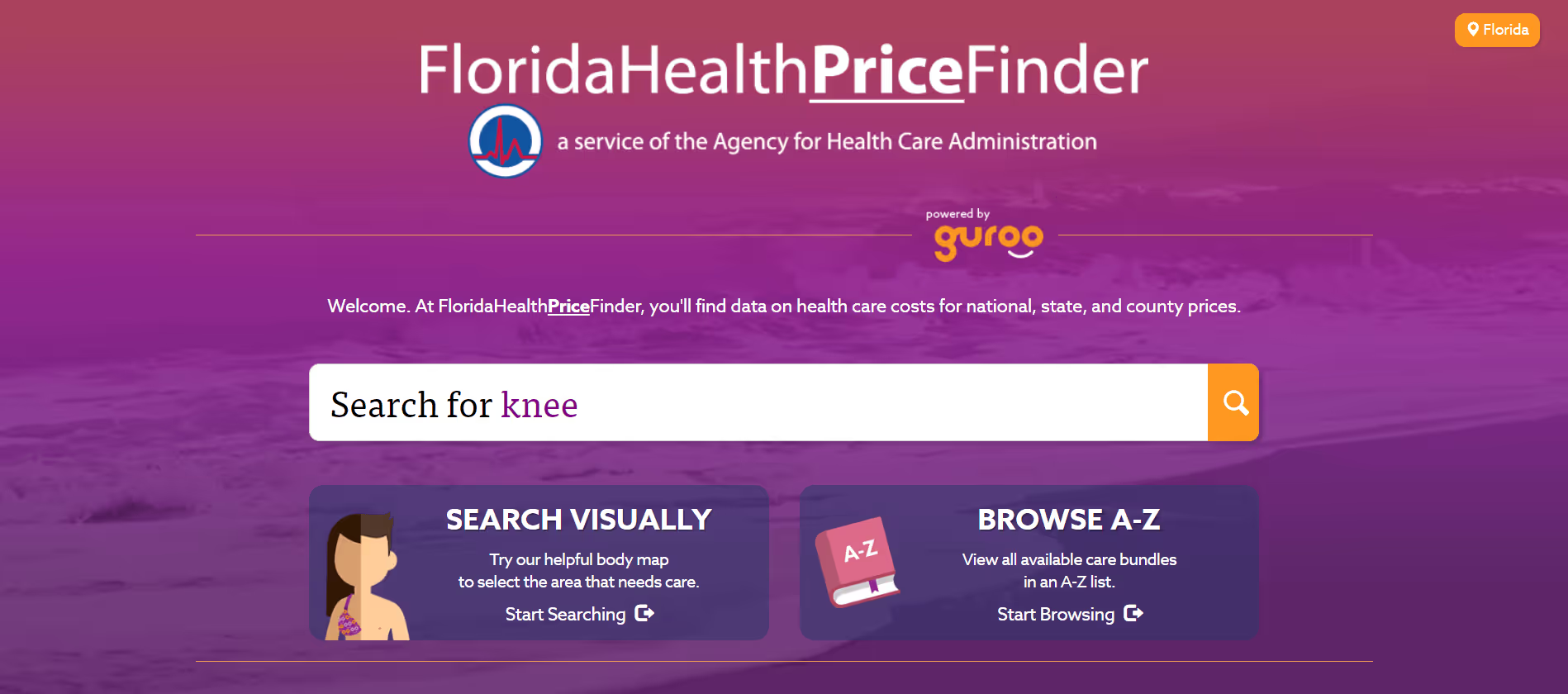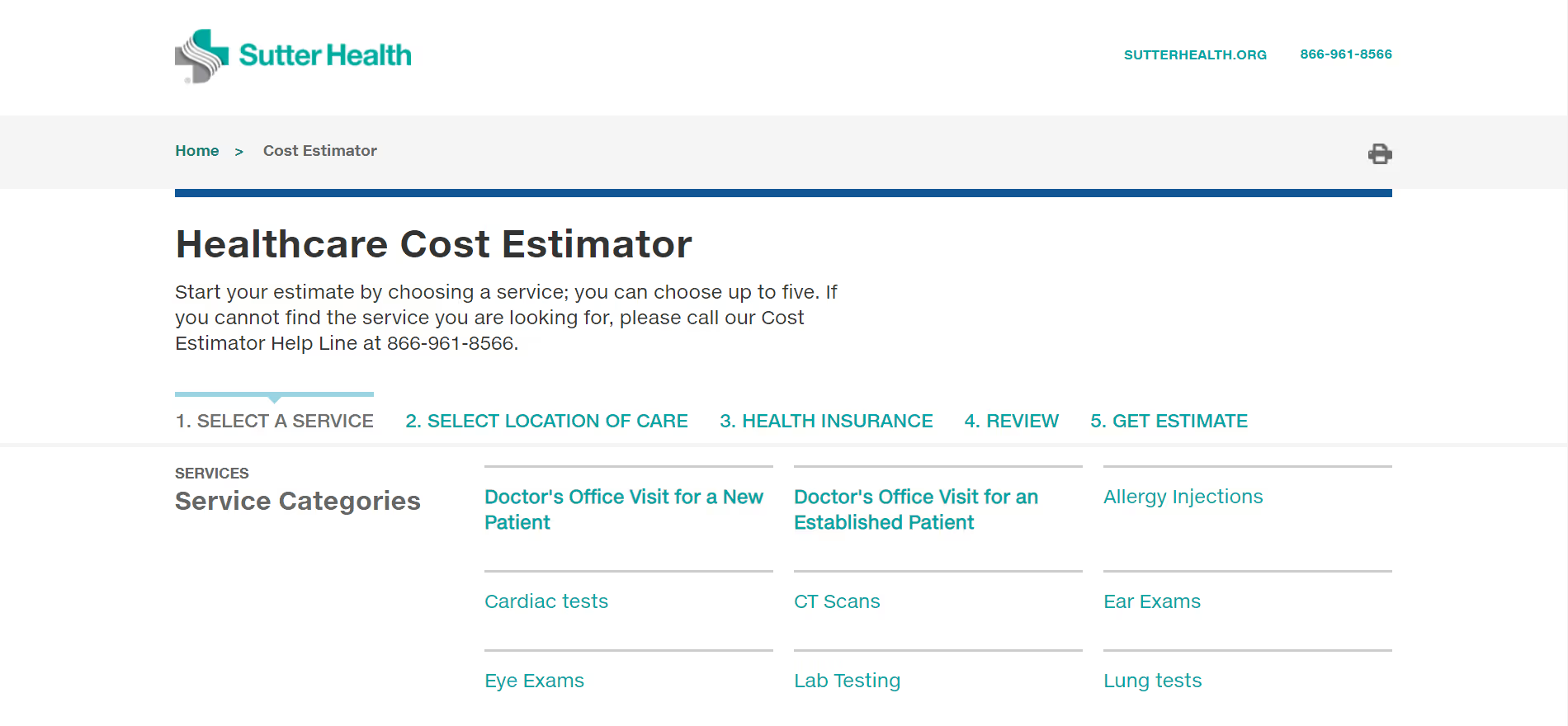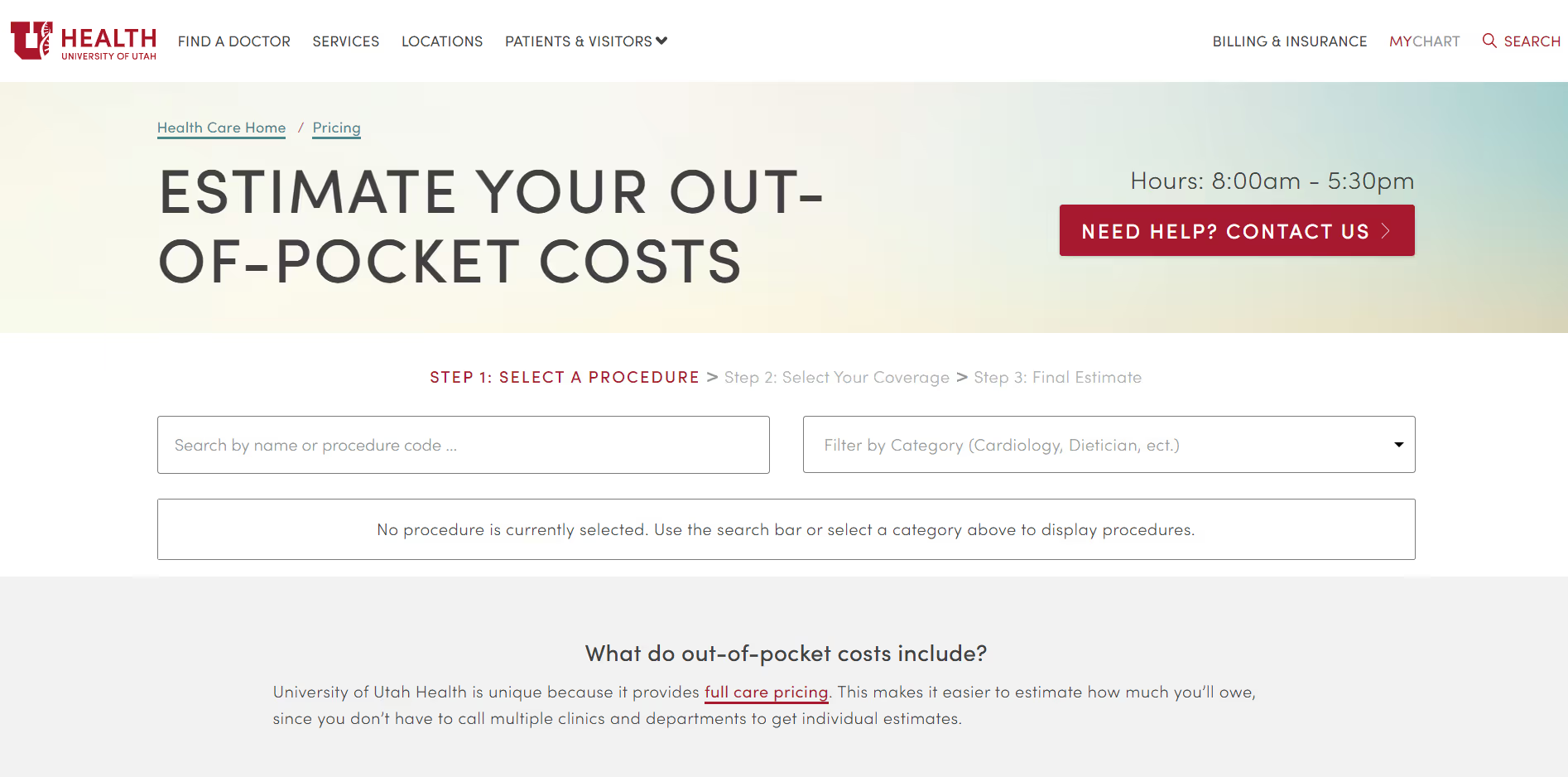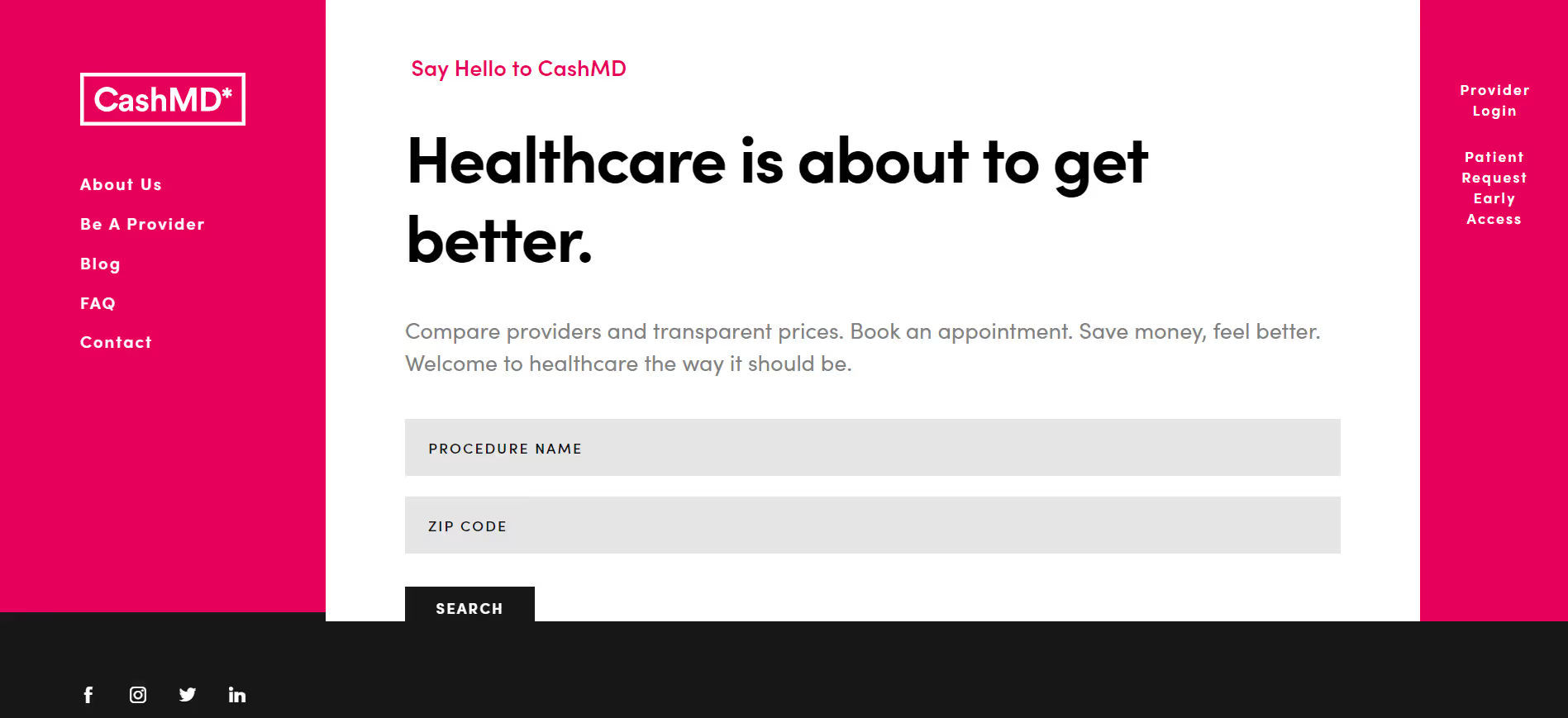11 Tools Transforming Price Transparency in Healthcare for 2020
Many organizations are developing tools so patients can estimate prices before receiving services. Here are 11 tools transforming price transparency in healthcare for 2020.

We’ve all experienced price transparency in some form.
When you go shopping, it’s easy to figure out your total before you get to the register. The items come with price tags, so you can do an estimate on what you’ll pay. Not to mention that you could pull out your phone and calculate the exact total yourself. Either way, you’ll know how much you owe and the best way to pay by the time you get to checkout.
This is how business-to-consumer commerce works and we’ve grown accustomed to its convenience. Could you imagine if healthcare costs worked this way?
Of course, the cost of healthcare services is more complex than buying candy at a store. We choose medical procedures and treatments based on our immediate needs, not the price. However, this makes it more difficult when it comes time to pay.
The reality of healthcare costs can sometimes hit patients like a brick. Especially between trying to find how much they owe on their statement and what their insurance covers.
If patients didn’t have an idea of what they would owe, they might not have enough time to prepare for payment. When they don’t pay, it causes issues for both the patient and the provider.
But this is on the verge of changing. Price transparency in healthcare allows patients to view prices before they need a service. This way, they can choose which medical provider to use based on what they can afford.
Many organizations are developing tools so patients can estimate prices before receiving services. Here are 11 tools transforming price transparency in healthcare for 2020.
Current Price Transparency Requirements
As of 2019, hospitals must post standard prices online which are viewable to patients. These are viewable within a chargemaster, which is the list of prices for all the services they provide.
The goal is to make prices known to patients to help ease the burden of health costs.
But these are large lists of medical codes, abbreviations, and dollar signs which only confuse patients. It’s difficult for patients to piece together charges for each service they need to calculate a total estimate.

Patients usually don’t know which all services their procedures involve, making it impossible to calculate.
This is why many organizations are trying to roll out more distinct tools and design better medical bills. Both of those have a huge impact on understanding service costs.
The Tennessee Right to Shop Act
Even though hospitals must post prices online, government officials continue to push for more price transparency in healthcare.
The Tennessee Right to Shop Act went into effect on January 1, 2020.
This bill requires access to prices before the need to seek for medical treatment. Health insurance companies must create an interactive digital marketplace for those seeking care.
It gives a better understanding of medical costs to make the decision process easier. With cost comparisons, the bill aims to benefit both patients and health organizations.
NYHealthcareCompare
New York Governor Andrew Cuomo plans to launch a tool to enhance price transparency. It would make it easier to compare costs and quality of hospital procedures across the state.
New York was the first state to pass legislation that prevents surprise bills. Now they’re pushing for more price transparency to help decrease medical costs. These efforts are because between 2013 and 2017, the state’s healthcare spending grew faster than almost all other states.
The tool that Cuomo plans to launch is a website called NYHealthcareCompare. It will provide price, quality, and hospital volume metrics. The site will also include resources such as how to handle a surprise bill and options for financial help.
Including quality of care helps with outstanding price transparency issues. Some think that consumers will choose the cheapest possible option, which may mean poorer quality. Or if it costs more, then it must be better, so patients may choose a more expensive option.
But price doesn’t always reflect quality in healthcare. It’s counterproductive to choose a service based on price if it ends up being low-quality. By knowing the quality of hospitals, consumers can better make their decisions when they need care.
Florida Health Price Finder

The state of Florida launched Florida Health Price Finder in November of 2019. This service finds medical procedure prices within the state.
There’s a price breakdown by county average, state average, and national average. This site helps Florida residents know cost estimates before they visit a practice.
However, some point out that the data given within the site is slightly outdated along with it’s user experience.
HealthScoreCT
This Connecticut-based website draws on information from the All-Payer Claims Database. The HealthScoreCT cost estimator website also includes quality ratings for medical providers.
The estimator compares the costs of about 46 procedures. It only includes information for those with commercial insurance plans in its current state. Although, it may include information for Medicaid and Medicare patients in the future.
The goal of this tool is to give power back to health consumers. It will help patients start the discussion with their providers and insurance companies.
The estimates don’t factor in deductibles, co-pay, or co-insurance, so it can’t substitute talking to doctors and insurance companies. Rather, it’s a starting point for understanding procedure costs.
Sutter Health Estimation Tool

The North Carolina health system Sutter Health recently developed a price estimator tool.
The healthcare provider contacts the patient’s insurance to determine outpatient service costs. The practice then creates a personalized, real-time estimate before the client needs services.
Patients access the tool through Sutter Health’s electronic patient portal, My Health Online. They can also access the tool with the phone app. Patients who’ve used this tool said they feel satisfied with their experience.
Schneck Medical Center

Schneck Medical Center’s tool will help in a patient’s decision process by determining cost estimates. The estimator is on the hospital’s website so patients can calculate their out-of-pocket expenses for a service.
This tool goes a step further than the requirement for hospitals to make costs public. Patients enter their insurance information and choose the type of procedure. The system then calculates an estimate for most major insurance companies. It determines this based on patient-specific information such as if they’ve met their insurance deductible.
The most common procedures will be on the site first, so procedures that aren’t as common might not be in the system yet. If that’s the case, patients can call the hospital to receive an estimate from a financial representative.
It’s only an estimate since something could happen during a procedure that affects the cost. These estimates include a reference number so patients can bring the information to their procedure. That way, the hospital can compare the actual cost to the estimate and explain to the patient why it’s different.
University Health Care System
In September of 2019, University Health Care System launched a tool to help with out-of-pocket expense estimates. The hospital released My Sure Pay Health on its main website.
This system was the first in its region to provide a tool like this. Patients input information about the service they need, as well as which location they’ll visit.
The estimator uses patients’ insurance information to determine deductibles for over 30 commercial insurers. There’s even an option for uninsured and self-pay patients.
University of Utah Health

This is another out-of-pocket expense estimator. It calculates prices based on the patient’s insurance - Medicare, Medicaid, private payer, or self-pay. Since the tool is for common services, patients can contact University of Utah Health if they don’t see their procedure on the list.
For those with health insurance, the tool gives the average allowable amount and an estimate of costs after the insurance bill. The tool bases the estimate on the patient’s insurance plan.
Self-pay patients receive an estimate of how much their services cost, minus a 30% discount. The discount is the health system’s way of helping these patients with healthcare costs.
Virgin Pulse and Healthcare Bluebook
Virgin Pulse, a digital health and wellness technology company, recently partnered with Healthcare Bluebook to boost price transparency. Healthcare Bluebook works to protect consumers and companies from overpriced, low-quality healthcare. Bluebook has an online healthcare shopping solution that Virgin Pulse will embed into its platform.
The tool uses a simple color-coded guide to help employers find high-quality healthcare providers with prices at or below a fair price. It currently helps over 5,000 employers cut health service costs. This partnership will enable Virgin Pulse’s clients to compare the cost and quality of services and providers.
CashMD

CashMD launched a tool to show patients the procedure costs at local providers before booking appointments. They’re able to search for various procedures to find the cost and provider location for the service.
The tool uses a cash pay model for healthcare providers. Instead of going through insurance, the patient pays the agreed-upon amount upfront for the service.
It also eliminates fees associated with insurance carriers and helps receive revenue faster.
RxRevu and Cerner Corporation
Some organizations are implementing transparency for medications too, not only services. This is beneficial because medications are already shoppable products, unlike medical procedures.
RxRevu and Cerner Corporation formed an agreement to help with medication price transparency. The organizations will integrate prescription pricing solutions into the electronic health record (EHR). This will provide coverage information earlier so that patients can get the medications they need at a price that works for them.
Providers can view medication costs within the Cerner EHR. Then, they can provide costs to patients and review financial information before the prescription. This allows them to ensure the cost is affordable for the patient. Providers can also access patient benefit information to make appropriate alternatives.
Conclusion
While it’s not an immediate transition, price transparency is a step towards alleviating some of the issues with high medical costs.
Also, it’s a good way to open up discussions about what different procedures involve. While it should empower consumers to be in control, it's not 100% the way there yet.
There’s still some confusion about services. It’s difficult for patients to piece together a total cost if they don’t know what services their procedure requires.
Patients and doctors should have conversations about price transparency services and what they entail. That way, patients can better navigate these tools.
Until a majority of systems create these tools, there’s no easy or accurate way to compare prices. As more organizations develop price transparency tools, patients can better compare service costs.
Emphasize your product's unique features or benefits to differentiate it from competitors
In nec dictum adipiscing pharetra enim etiam scelerisque dolor purus ipsum egestas cursus vulputate arcu egestas ut eu sed mollis consectetur mattis pharetra curabitur et maecenas in mattis fames consectetur ipsum quis risus mauris aliquam ornare nisl purus at ipsum nulla accumsan consectetur vestibulum suspendisse aliquam condimentum scelerisque lacinia pellentesque vestibulum condimentum turpis ligula pharetra dictum sapien facilisis sapien at sagittis et cursus congue.
- Pharetra curabitur et maecenas in mattis fames consectetur ipsum quis risus.
- Justo urna nisi auctor consequat consectetur dolor lectus blandit.
- Eget egestas volutpat lacinia vestibulum vitae mattis hendrerit.
- Ornare elit odio tellus orci bibendum dictum id sem congue enim amet diam.
Incorporate statistics or specific numbers to highlight the effectiveness or popularity of your offering
Convallis pellentesque ullamcorper sapien sed tristique fermentum proin amet quam tincidunt feugiat vitae neque quisque odio ut pellentesque ac mauris eget lectus. Pretium arcu turpis lacus sapien sit at eu sapien duis magna nunc nibh nam non ut nibh ultrices ultrices elementum egestas enim nisl sed cursus pellentesque sit dignissim enim euismod sit et convallis sed pelis viverra quam at nisl sit pharetra enim nisl nec vestibulum posuere in volutpat sed blandit neque risus.

Use time-sensitive language to encourage immediate action, such as "Limited Time Offer
Feugiat vitae neque quisque odio ut pellentesque ac mauris eget lectus. Pretium arcu turpis lacus sapien sit at eu sapien duis magna nunc nibh nam non ut nibh ultrices ultrices elementum egestas enim nisl sed cursus pellentesque sit dignissim enim euismod sit et convallis sed pelis viverra quam at nisl sit pharetra enim nisl nec vestibulum posuere in volutpat sed blandit neque risus.
- Pharetra curabitur et maecenas in mattis fames consectetur ipsum quis risus.
- Justo urna nisi auctor consequat consectetur dolor lectus blandit.
- Eget egestas volutpat lacinia vestibulum vitae mattis hendrerit.
- Ornare elit odio tellus orci bibendum dictum id sem congue enim amet diam.
Address customer pain points directly by showing how your product solves their problems
Feugiat vitae neque quisque odio ut pellentesque ac mauris eget lectus. Pretium arcu turpis lacus sapien sit at eu sapien duis magna nunc nibh nam non ut nibh ultrices ultrices elementum egestas enim nisl sed cursus pellentesque sit dignissim enim euismod sit et convallis sed pelis viverra quam at nisl sit pharetra enim nisl nec vestibulum posuere in volutpat sed blandit neque risus.
Vel etiam vel amet aenean eget in habitasse nunc duis tellus sem turpis risus aliquam ac volutpat tellus eu faucibus ullamcorper.
Tailor titles to your ideal customer segment using phrases like "Designed for Busy Professionals
Sed pretium id nibh id sit felis vitae volutpat volutpat adipiscing at sodales neque lectus mi phasellus commodo at elit suspendisse ornare faucibus lectus purus viverra in nec aliquet commodo et sed sed nisi tempor mi pellentesque arcu viverra pretium duis enim vulputate dignissim etiam ultrices vitae neque urna proin nibh diam turpis augue lacus.




